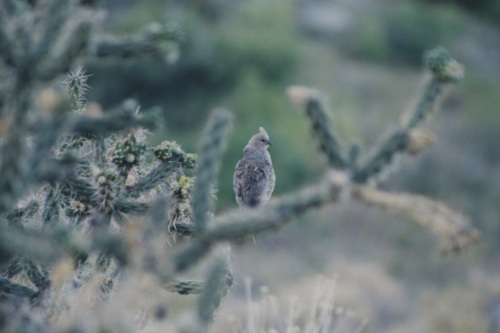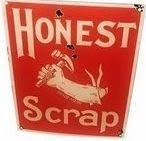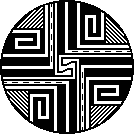Quail are sociable, staying together from birth to death as a covey, and when one lone quail, separated from the group, calls out plaintively, the covey circles back and joins the solitary being, bedding down all together in the evening so that they appear to be one animal, not fifteen or twenty, when observed closely. (I have reared quail and know their habits.) The quail also make for a fine gumbo, or with a brown sauce on top of white rice, a delicious entree. They are beautiful and interesting to watch, but they are also food.
Deer, buck or doe, appear majestic in the field as they scan for predators and graceful when they arc over fallen timber or fence. Fawns scamper and play about their mothers like children at the playground. The backstrap or tenderloin of the deer is one of the finest cuts of meat on earth. The liver of venison when soaked in milk overnight becomes delicate to the taste when fried and offers potency to the sick. Deer are beautiful and interesting to watch, but they are also food.
Two years ago, in 2009, I chose the name of my blog, “Sage to Meadow,” based upon a post by Coffeeonthemesa, a blog published out of Taos, New Mexico.  Coffeeonthemesa uses a phrase in her post that describes a covey of scaled quail moving from “sage across the meadow” near her home. I like that. It describes plant and terrain, sage and meadow: expansive geographic images and symbols of the American West.
Coffeeonthemesa uses a phrase in her post that describes a covey of scaled quail moving from “sage across the meadow” near her home. I like that. It describes plant and terrain, sage and meadow: expansive geographic images and symbols of the American West.
Here is the post of Coffeeonthemesa — the italics are mine — that gave my blog its name and a setting of a lesson about food.
The covey of scaled quail (Callipepla squamata) that pass through our yard on their mesa rounds is smaller this year. It seems there are only a dozen or so, but they are quite plump. They move north to south from the sage across the meadow, stop to graze under the sunflower seed feeder, move through the little shed (have they ever found anything to eat in there?) and out again, in a little row. They search around the wood pile and cross the barren summer garden, before heading down the road towards the mesa edge. Last week I found the feathers and scant remains of one on the north side of the house where our woodstove ash pit lies.
They’re short-tailed, chunky birds with a cotton top crest, and the lookout quail sits atop a sagebrush or low fence post and barks out warnings to the others. Generally they run when something nears, zigzagging through the underbrush. Although the covey can explosively flush when startled.
I cannot help, when watching them under the feeder, but imagine how their plump little breasts would make a fine gumbo.
Coffeeonthemesa blog, Taos, New Mexico, November 13, 2009.
The eloquence of Coffeeonthemesa’s prose brings the eternal cycle into her final sentence: “I cannot help, when watching them under the feeder, but imagine how their plump little breasts would make a fine gumbo.”
I have never been a consistent hunter in the food chain. I shop the food chain. I go to the supermarket for food, but I know it is not the supermarket that gives me food.
I have hunted in the food chain. In the 1970s, I went deer hunting with two friends, shot my deer and dressed it in the field. Oh, I had known the one-life-for-another axiom for a long time, but the buck I shot set the lesson inside me, inside my body so that all the literature and thinking I had ever done about one-life-for-another seemed faraway, alien even, to the beautiful, majestic animal I knelt before.
Beneath me, still breathing, eyes open, the grey coat shimmering, lay the deer, my first deer, its antlers hard and white. No longer would he browse the field, sniff the wind, eat acorns beneath live oaks. His animation was near end. As I put my pistol to his heart, I promised myself that I would prepare all of him for me and my wife and my friends to eat. I would honor this being, this deer, this day under the sun near Van Horn, Texas.
As I dressed the deer, I retched and threw up.
Must all lessons be assimilated like this? Or, expelled like this? Can’t very well drop the class can I? Can we? How do I get out of this university (universe)?
The regret and sadness I had that day recedes when I ponder the lesson the deer set in me. In my anthropology classes, the lesson is taught every semester, every class, to every student. I don’t grade them on it except for the economics of reciprocity in a society. I set them on a path to learn the lesson — they will have to go into the field to have the lesson truly set, but here are the words:
We all take life to sustain ourselves. To obscure that fact is profane. To recognize that we take a life to sustain ourselves is sacred. The sharing of food with another, next to laying down our life, is the greatest gift we can give others. Who feeds you? And, what do you do for them in return?
Jack Matthews, author of Sage to Meadow, Introductory Lecture in Physical and Cultural Anthropology.
____________________________
Notes, corrections and additions:
The New Mexico State University Scaled Quail Management Operation.
Marcus G. Martin Bird Photo Gallery. The quail on cholla bush is from Martin’s gallery — permission pending. Click his link for other photographs and website.
This post started out only as a post describing how my blog got its name. From quail gumbo, however, the post grew into what it is now.
Along with the more somber lesson herein written, there are other lessons from an anthropological perspective that relate to to food: (1) by giving food, parties, spreading your resources, you enlarge your social network and friends; (2) gifts make slaves; (3) by giving of gifts, including food, you create obligations. I think that we could go deeper into the psychology of harvesting animals, but for the moment, this is it. One aspect that bears mentioning is that if you take life with respect, you probably won’t harvest unnecessarily, and you will get beaucoup angry with those that do. You may even go to war with agencies that take the fat of the land and hold it in reserve, extracting a price for its distribution. Read most any history on the opening of the American West, the partial closing of the American West.


![deer[1]](https://swamericana.files.wordpress.com/2011/10/deer1.jpg?w=440&h=440)















